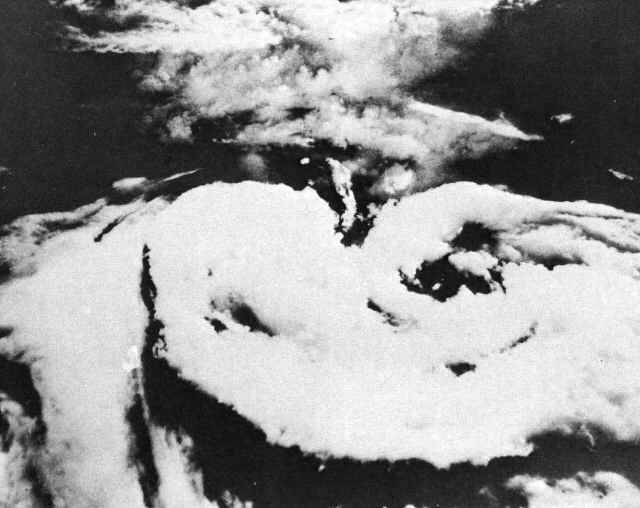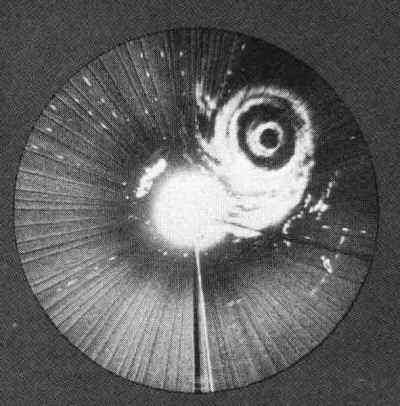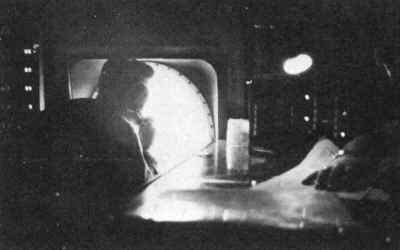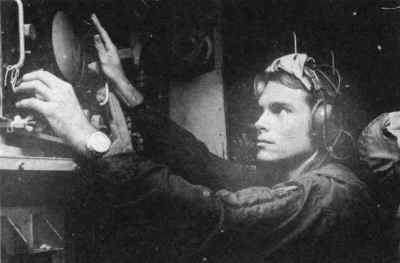
THE SEA near the Republic of the Philippines, was a boiling, seething kettle of leaping gray waves. A blasting wind chopped the 30-foot waves in half and dissolved them into a howling, whistling spray.

Lieutenant Donald C. Martin, 10,000 feet above the angry sea, tightly gripped the controls of his weather research plane. He had just given the customary order to strap themselves into their seats and secure all sharp objects.
The crew was preparing to do what they had done many times before -- they would fly their specially equipped WC-121N Super Constellation of Fleet Air Reconnaissance Squadron 1 (VQ-1) into a typhoon. They would read the storm's characteristics, fly out, head home. It was a routine mission, but the men were tense and quiet.
To the west, an Air Force twin-engine EC-47 earlier had taken off from Da Nang Air Base. The crew had been briefed that a typhoon was swirling along the eastern coast of the Republic of the Philippines but would pose no threat since they were to land on the "opposite side."
Deep inside the other aircraft, the VQ-1 weather reconnaissance plane, Lieutenant (jg) Roderick W. Dame watched the raging typhoon on his radarscope. It appeared as a revolving white ring in a field of electronic snow.
It was noon. The pilot of the smaller plane scanned the horizon and saw a wall of heavy, dark clouds. They looked like a line of common thunderstorms, and the plane continued on course.
STRAPPED into his seat near the tail of the Navy plane the meteorologist looked out through the port but could see nothing but the endless gray fog and spray. The aircraft was flying "blind"—by instruments only.
Just as the Guam-based Super Constellation banked slightly and aimed for the typhoon's center a voice came crackling over the radio. "Mayday! Mayday!"
"We are experiencing severe turbulence," yelled the strained voice. "Our wings are about to come off!"

VQ-1 copilot, Lieutenant Alton E. Wyatt, heard the desperate call and jerked his hand up to cup his earphone. He answered, but there was no reply. A few moments passed and again the voice came . . . "Maydayl Mayday!!"
Again LT Wyatt answered. This time the troubled plane heard the call and repeated its plight.
Copilot Wyatt immediately called back to LTJG Dame strapped in at the radarscope and told him that a plane had strayed into the typhoon. He scanned the screen and spotted the white blip which was the endangered aircrafts radar reflection. The plane was at 7000 feet—the worst possible height--and headed straight for the typhoon's eye. If it didn't change its course soon, it would be grasped by Typhoon Harriets unsympathetic hands and smashed to pieces.
OUTSIDE, the rain and the 80-knot winds beat against the aircraft. Its two engines struggled against the blast of wind. Fear gnawed at the pilot as he noticed that one his engines was threatening to die. The plane's radar was completely washed out by the storm They had no idea how they flew into a storm which was supposed to be on the other side of the islands.
Almost out of control, the struggling plane rolled and pitched at the mercy of the high wind. It had no choice but to be swept around in Harriet's circular path. Opposing gusts of wind tore at the fuselage as if trying to tear the plane in half. Rivets popped. Rapid jolts threw the men back into their seats, then immediately forward, with belts straining. A heavy blast of wet wind crashed, into the tail, twisting it. A hatch was suddenly torn off its hinges and the thunderous winds roared into the plane. The sick engine grew weaker. Inside, the men thought they were doomed.

LTJG Dame watched the plane on his radar screen and relayed what he saw up to the cockpit where the pilot radioed it to the battered twin-engine EC-47. The lieutenant could actually watch the plane and the typhoon come closer to each other. He quickly plotted a safe course for the aircraft and relayed the information. All his thoughts focused on his radar screen as he guided the crippled plane away from the typhoon.
SLOWLY the white blips moved across the screen and away from the swirling storm. Inside the damaged plane the men were silent. They knew what would have happened if the VQ-1 weather plane had not been there to guide them out of the storm.
LT Martin banked his plane and returned to the course from which he was sidetracked. After completing the planned penetration of the typhoon he headed for Clark Air Base where he and his crew, on landing, once again met up with the Air Force team, this time under slightly more favorable conditions.
The two crews shook hands.
"We appreciate your assistance," said the smiling Air Force pilot.
No doubt they did. — PR2 Robert Alexander

